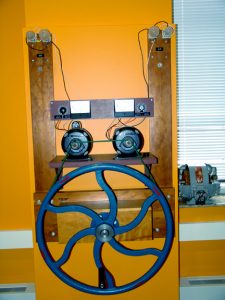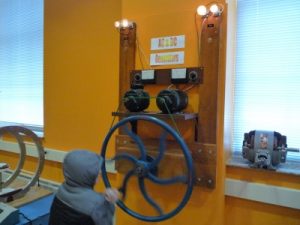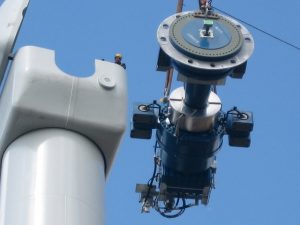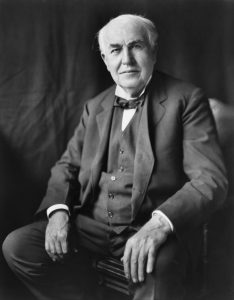 |
 |
Generators convert mechanical energy to electrical energy. Here we are using the electrical energy we produce to power lightbulbs!

What to do:
- Turn the large crank wheel clockwise as fast as possible.
- Watch the light bulbs mounted above the two generators. Each is connected to a 15W and a 25W bulb.
WHAT HAPPENS IF YOU TURN THE WHEEL SLOWLY OR VERY FAST?
Answer: When turning the wheel slowly, none of the light bulbs turn on. As you turn it faster, the 15W and then the 25W bulbs will turn on!
What is happening? Both the AC and DC generators have coils that are rotated through magnetic fields when the big wheel is turned. In the AC generator the direction of the current in the coil changes with time, while in the DC generator current goes in only one direction. In both generators, the amount of voltage produced is directly related to the rotation speed of the coil. So, when you turn the wheel faster, more voltage is produced and larger light bulbs can be lit.
Thomas Edison (1847 –1931) was a proponent of using DC generators (produced by his company, General Electric) to provide energy across the US, while Nikola Tesla (1856 –1943) licensed his AC generator to Westinghouse Electric with the same goal. (See the Tesla coil exhibit for another of his inventions.) AC generators and AC power transmission are now the standard, due to less power loss in electric lines and thus needing fewer power generating locations.
